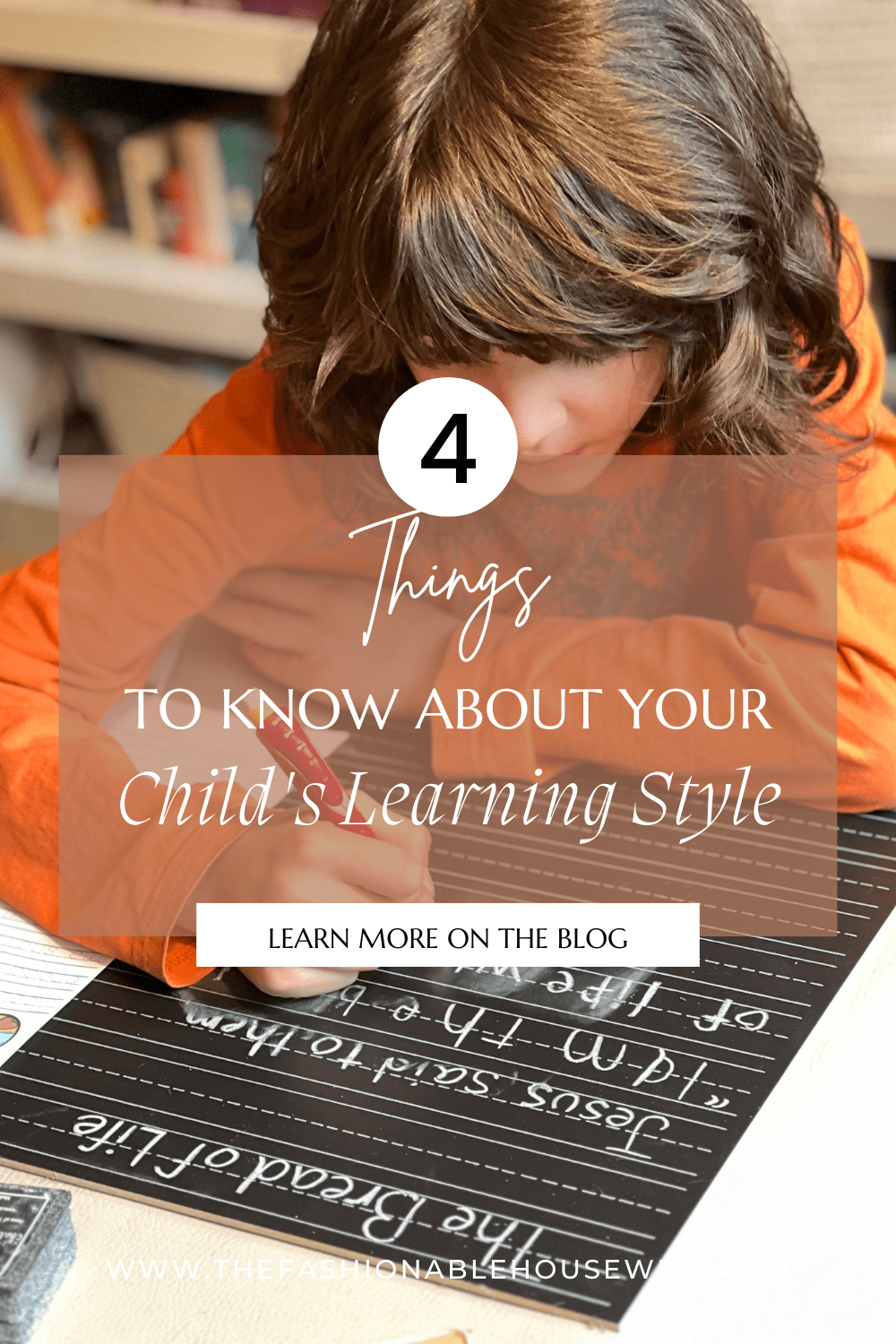
Everyone processes and retains information in their own way through various learning styles. Discovering your child’s learning style can help facilitate the learning process. Knowing how your child learns best can help you recognize and use their strengths to set them up for success. Here are some other things you should know about your child’s learning style.
1. Learning Styles Aren’t Exclusive
Your child can have multiple learning styles. They might have one or two primary learning styles, but the rest appeal to them in various ways. For example, your child might lean more toward visual learning than they do kinesthetic learning. Yet, the auditory learning style suits them just as much as visual learning does.
Multimodal learners use multiple senses to learn. Multimodal learners often switch between learning styles depending on the subject. Combining learning styles can help you retain more information. Knowing that your child can have multiple learning styles can help you present the right learning opportunities for them to absorb information through different mediums. Although multimodal learning uses a combination of learning styles, one style typically works best for your child.
You can gauge their learning styles through various methods, like watching them from a young age during unstructured play. Watch how your child interacts with the world around them and how they process information. The types of toys your child prefers to how active they are can determine what type of learner they are.
2. Determining Your Child’s Learning Style
Learning how to determine your child’s learning style can help you maximize on their strengths and foster their learning. Discovering your child’s learning style can help you make learning fun and strengthen their other learning styles. The main learning styles are auditory, visual, reading and writing and kinesthetic. Visual learners thrive during visual activities like art, illustrations, graphs and maps. Auditory learners excel in verbal instruction and musical activities.
Kinesthetic learners flourish from hands-on and physical activities. Kinesthetic learners often use a trial-and-error method to keep them engaged. They would much prefer touching or moving to listening to a lecture. A reading and writing learner will thrive from writing out and organizing their study notes. Checklists and reading blocks of text to understand information often made students with this learning style more independent.
Kinesthetic learners are often more creative since movement increases oxygen in the blood and stimulates cognitive thinking. Movement and hands-on activities foster problem-solving, communication and social skills. Auditory learners are great at multitasking, retaining information and critical thinking, comprehension, and listening skills. They often focus more intensely which leads to better memory and overall conceptual understanding.
4. Supporting Your Child’s Learning Style
Finding activities that support your child’s learning style can benefit your child’s learning process. There are many benefits to each learning style—you just have to know how to hone in on them. You can support your child’s learning style by discovering how they learn best and catering to their strengths.
You can help them develop and strengthen their weaknesses by honing in on their strengths. For kinesthetic learners, you can offer quick breaks to incorporate movement into their lessons. Use mindful toys like fidget spinners to help them maintain focus and have movement while they listen to their lessons. For auditory learners, you can encourage social interaction and classroom discussions. You can also encourage them to take audio recordings of lectures rather than writing notes.
Some auditory learners excel at listening to information first and then making notes about what they retained later. If you have a visual learner, you can support them by creating a visual schedule for their day and incorporating maps and illustrations as much as possible into learning opportunities. Encourage visual learners to write things down to help them remember information. You can also make their study area visually interesting to increase their focus and help them study better.
5. Learning Styles Can Evolve
Learning styles can change as your child grows and develops. Young children are often kinesthetic learners because they are so intrigued by the world around them. Young kids are fine-tuning their motor skills and developing critical thinking skills and they discover new things. As kids age, they settle into what learning style suits them best. Children look to their parents for guidance in every area of their lives.
Discovering their learning style early can help them work and build on other areas of learning to support them once they start school. Facilitating learning at home can make a significant difference in the classroom. Multimodal learning is often used in the classroom, but it can still be difficult for some children to digest without structured emphasis on their specific learning style. Knowing how your child’s learning evolves can help you assess and assist them with learning complications.
This can come in handy in many situations, like when you don’t know how to help your child with their algebra homework. Many times, you don’t have to understand the subject matter. You just need to know how to facilitate your child’s learning style into the situation so they can help themselves see the problem from a different perspective. Catering to learning styles can change an entire outlook on a problem and help kids find solutions independently.
Fostering Your Child’s Learning Style
Determining and supporting your child’s learning style can accommodate them on their educational journey well into adulthood. Learning how they absorb and retain information best can help them build their arsenal of knowledge and set them up for success in future endeavors.
Want to see more posts like this?
Visit our homeschool blog!
The post 4 Things to Know About Your Child’s Learning Style appeared first on The Fashionable Housewife.
